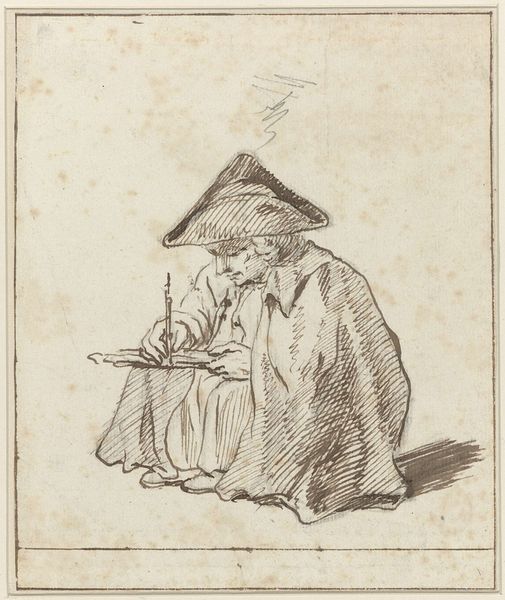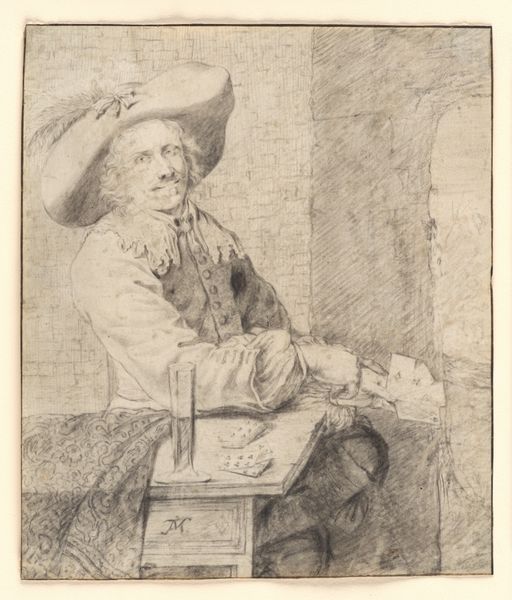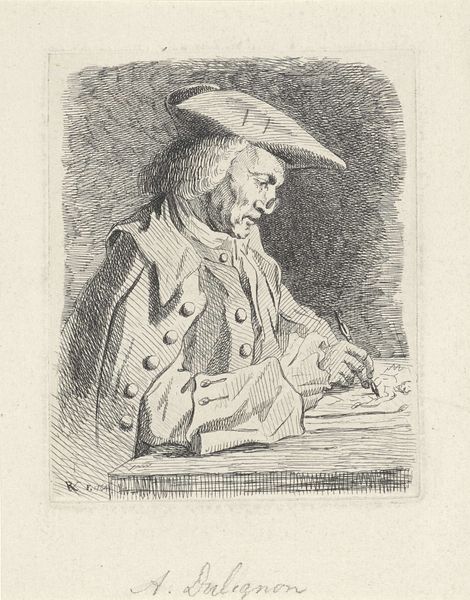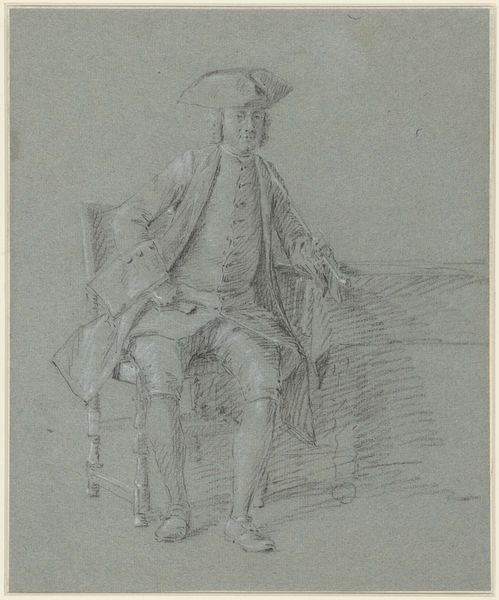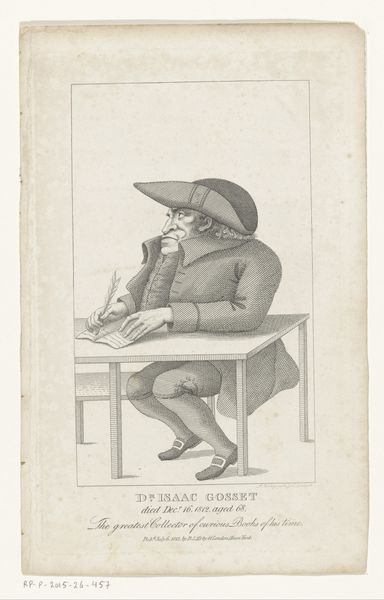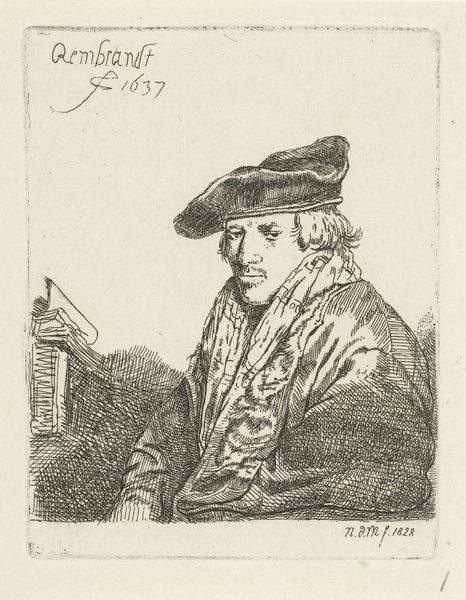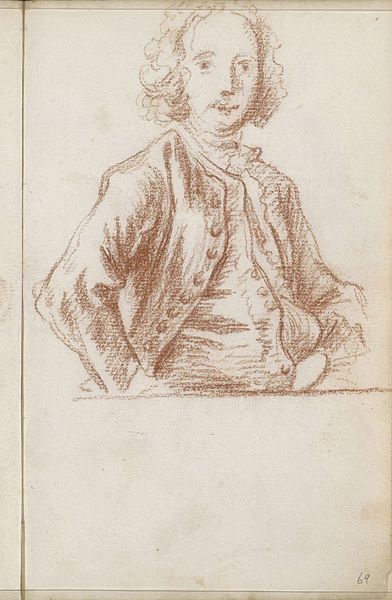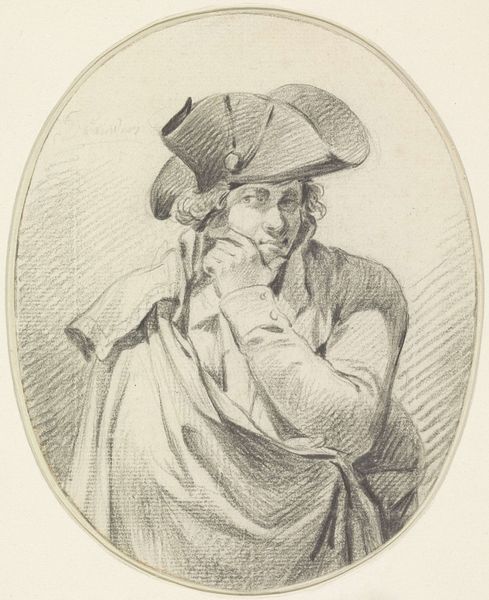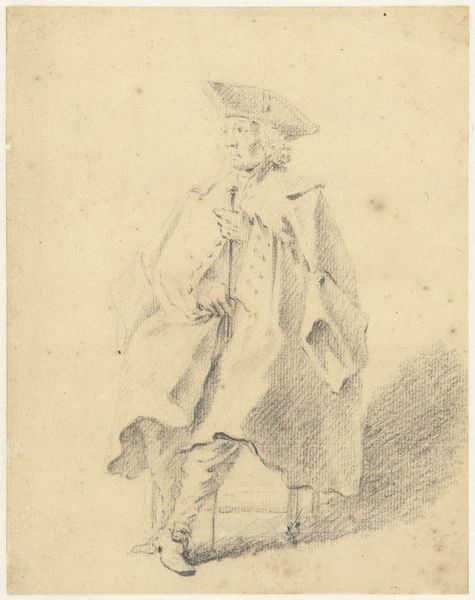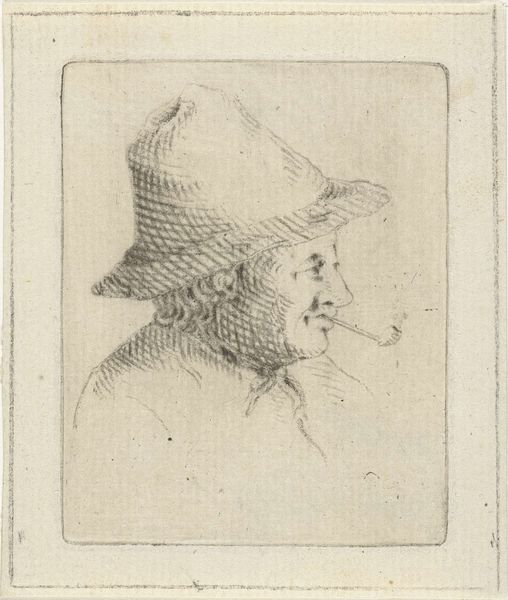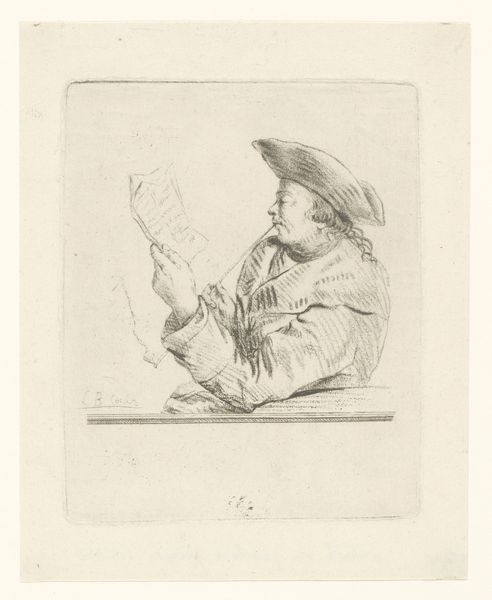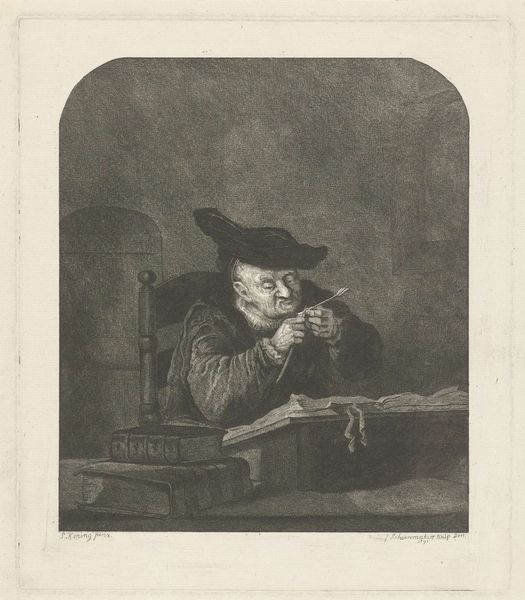
Dimensions: height 141 mm, width 132 mm
Copyright: Rijks Museum: Open Domain
Curator: This is a pencil drawing by Reinier Vinkeles, entitled "Portret van Abraham Dulignon." It was likely created sometime between 1750 and 1816, and we are lucky to have it here at the Rijksmuseum. What strikes you about it? Editor: There’s a softness, an intimacy to the line work that immediately captures my attention. The artist focuses intensely on the document in front of him, his brow furrowed. It feels like a very private moment rendered for public view. Curator: Absolutely, Vinkeles’ choice of pencil and his rendering of the subject, focusing on capturing the likeness of Abraham Dulignon, highlights a trend toward more intimate and accessible forms of art during that time, versus relying on, say, large, elaborate paintings made from costly pigment. Editor: Indeed. Consider the formal aspects of the hat alone. The meticulous detailing, the way it casts a shadow, creating a certain diagonal axis across the figure's upper portion—it draws the eye but also directs it downward, mirroring the direction of Dulignon’s own gaze. The semiotics of the tilted head suggests deep engagement. Curator: I agree. But let's think beyond the surface, to the materiality of the work. This sketch offers a glimpse into artistic labor. What kind of person made a drawing versus an etching, and to what use would this study be put? Was this a quick, economic preliminary exercise? Or something presented, perhaps? Editor: It does present that material tension, doesn’t it? A study in romanticism, of course, with that sensitivity to emotion but still possessing an undercurrent of, almost, functional representation. Curator: Well, thinking about consumption: was there a market for pencil drawings? Perhaps its smaller scale made it more suitable to a domestic sphere or private collection, aligning with emerging social practices in artistic consumption? Editor: It seems that his status is very carefully denoted by the fine rendering of fabrics and forms of his outfit. But also notice the textural effects that the artist conjures through pure line variation— it transforms a commonplace scene into something arresting. Curator: Fascinating. When you focus on the interplay of technique and representation alongside socioeconomic forces that might have shaped the production of works on paper during that era it brings it into greater clarity. Editor: A worthwhile endeavor for all, I think!
Comments
No comments
Be the first to comment and join the conversation on the ultimate creative platform.
